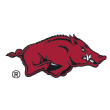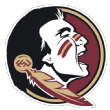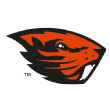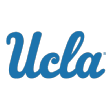Most of the teams in college football’s preseason top 10 have experienced the “second-year leap” at some point over the past 20 years.
During that span, Nick Saban at Alabama, Kirby Smart (and Mark Richt) at Georgia, Bob Stoops at Oklahoma, Jim Tressel at Ohio State and Urban Meyer at Florida all saw massive success in their second season in charge. And just last year, LSU earned its first top-10 finish in seven seasons under Ed Orgeron, and Texas earned its first in nine years under Tom Herman; both were second-year coaches.
There is a broader statistical angle to this effect, as well: If a head coach is going to see a leap, it’s probably going to happen pretty quickly after his hire. Over the past 10 seasons, 23 teams have seen their S&P+ rating improve by 18 points per game in a single season. Eighteen of those teams were led by a head coach in either his first, second or third season at the helm. And among that range, the second year is the most likely chance at improvement.
In a coach’s first year, his team’s average change in S&P+ rating is minus-1.03, with a minus-0.12 average change in win total. By Year 2, the average change is plus-2.59 (plus-0.87 win total). In Year 3, the average change in S&P+ rating is plus-1.44 (plus-0.26 win total).
Over those 10 years, 70% of second-year coaches enjoyed a win total at or above that of their first year and 63% saw their S&P+ rating improve (46% by at least three adjusted points per game, 17% by at least 10).
If that trend were to continue for this year’s 20 second-year coaches, approximately 13 of them will improve on paper, including three by a large amount. Who would you pick for each group?
FBS teams with second-year coaches in 2019: Arizona (Kevin Sumlin), Arizona State (Herm Edwards), Arkansas (Chad Morris), Florida (Dan Mullen), Florida State (Willie Taggart), Georgia Southern (Chad Lunsford), Kent State (Sean Lewis), Mississippi State (Joe Moorhead), Nebraska (Scott Frost), Oregon (Mario Cristobal), Oregon State (Jonathan Smith), Rice (Mike Bloomgren), SMU (Sonny Dykes), South Alabama (Steve Campbell), Tennessee (Jeremy Pruitt), Texas A&M (Jimbo Fisher), UCF (Josh Heupel), UCLA (Chip Kelly), UL-Lafayette (Billy Napier), UTEP (Dana Dimel).
Let’s narrow the field to its most likely leapers.
First, let’s focus on the guys who have room to make a big jump — that is a requirement, after all. Saban went 7-6 in his first year at Alabama and therefore had room for a five-win leap. Smart (8-5 in his first year), Stoops (7-5) and Tressel (7-5) had similar first seasons.
So that probably eliminates Florida (10-3, ninth in S&P+ last year), Texas A&M (9-4, 11th), UCF (12-1, 18th) and Mississippi State (which, to be fair, went only 8-5 but also finished eighth in S&P+, which makes it unlikely to experience a substantial jump in that category in Year 2). Any or all of them could do great things, but it wouldn’t really be defined as a “leap.”
A second-year leap usually follows a full-on Year 0 situation — or at least a pretty mediocre, forgettable first-year performance lower than what recruiting rankings or statistical projections would have guessed. Our prime leap examples also all came at schools with a history of success. In theory, that eliminates the following teams, as well:
• Arizona and Arizona State. Their 2018 performances were pretty close to their historical averages. Are they still leap candidates? Absolutely, but probably less so than others.
• Georgia Southern and UL-Lafayette. The Eagles went 10-3, while the Ragin’ Cajuns, despite a 5-3 Sun Belt record (7-7 overall), still won their division, so a leap for either is unlikely.
• Kent State, Rice, South Alabama and UTEP. Sadly, there are no expectations or history here. They could leap, and it would be a great story worth writing about, but the ripple effect would not be particularly large.
That leaves seven true leap candidates for 2019: Arkansas, Florida State, Nebraska, Oregon, Oregon State, Tennessee and UCLA. Let’s make the case for and against a leap for each:

Arkansas
Chad Morris’ first season in Fayetteville was a lot like his first at SMU. In both instances, he took over a descending program and went 2-10 in his first season.
Beginning in his second season at SMU, though, the Mustangs improved quickly. After beginning Year 2 just 2-4, they went on a 9-5 stretch that extended into the following season. The biggest reason for that improvement? The play of quarterback Ben Hicks. After some initial freshman struggles, he ripped off a 60% completion rate and a 142.6 passer rating during that 9-5 run.
Morris could have used Hicks last season. A trio of Razorbacks QBs completed just 55% of their passes, threw 18 interceptions and produced a 112.4 passer rating, 114th in the country.
Incredibly, all three of last year’s QBs have left. Morris brought in a pair of transfers in Texas A&M’s Nick Starkel and — you guessed it — Hicks. At the very least, Morris now has someone he can trust to handle the reins. He also has a receiving corps that returns four of last year’s top five weapons, and his first full-year recruiting class featured three four-star pass-catchers. The potential for a second-year leap on offense, at least, is high.
John Chavis’ defense has potential — the Hogs did improve from 91st to 49th in defensive S&P+ last year despite occasional collapses — but only if a young secondary can hold steady. The front seven is loaded with experience, but the two-deep in the back is going to be pretty sophomore-heavy.
Where would a three-point jump in S&P+ place the Razorbacks in the 2019 projections? 39th. A 10-point leap would place them 18th, while an 18-point surge would make them ninth.
You pretty much have to be a top-20-caliber team to manage 8-4 or better in the current SEC West, but improvement is likely.

Florida State
Any time a team with Florida State’s resources and history goes 5-7, the odds are pretty good, just from a progression-to-the-mean perspective, that a rebound is coming. But what about a leap? The answer could be determined by one of the most maligned and analyzed units in college football: the Seminoles’ offensive line.
FSU’s 2018 O-line collapse was years in the making. It was the perfect combination of injury, poor recruiting and poor development. Willie Taggart didn’t oversign offensive linemen to address the issue this past year, but new offensive coordinator Kendal Briles was a package deal of sorts with OL coach Randy Clements, who has tons of experience in instructing linemen in a Briles-ian offense.
If Clements can just make this unit mediocre (that’s not much of a campaign slogan, but it’s valuable all the same), FSU’s skill corps — receivers Tamorrion Terry, Keith Gavin, D.J. Matthews, Keyshawn Helton, plus highly touted but still unproven running backs Cam Akers and Khalan Laborn — could thrive.
That could rub off on the defense. Thanks mostly to FSU’s truly wretched offense, opponents enjoyed an average starting field position of 35.6, the best in the country. That the Noles allowed more than 30 points only four times was a minor miracle, especially with seven freshmen and sophomores among their top 11 tacklers. Ace pass-rusher Brian Burns is gone, but almost everyone else returns. Give the defense about 5 extra yards to work with and watch it tee off.
A three-point jump in S&P+ would place the Seminoles 55th in 2019, while a 10-point leap puts them 25th and an 18-point surge would place them 12th.
The Noles might be the most likely of the leap candidates — the Football Power Index has them projected 21st; S&P+ has them 33rd — but they also have a long way to leap.

Nebraska
Scott Frost was the engineer of one of the two most noteworthy second-year leaps of the decade (along with Georgia’s), boosting UCF from 6-7 in 2015 to 13-0 in 2016 and improving the Knights’ S&P+ rating by 16.3 adjusted points per game. And his first year in Lincoln played out a lot like 2015 in Orlando: He handed the reins to a freshman quarterback (McKenzie Milton at UCF, Adrian Martinez at NU) and let him work through some struggles while smoothing out a few defensive deficiencies.
Nebraska’s record didn’t improve last year, as UCF’s had in 2015, but the similarities were obvious enough to put the Huskers pretty high up on the national title odds list. And somehow, their title odds are still improving — from 40-1 in mid-June to 25-1 now.
As I wrote back in June, however, this feels like far too much, too soon. The Huskers need a full Milton-ian leap from Martinez, and they need new skill corps starters to not only replace last year’s 1,000-yard rusher (Devine Ozigbo) and receiver (Stanley Morgan Jr.) but vastly outpace them. They also need a pass rush and a young secondary to thrive.
And they need a massive leap, as well, to be a contender. It would take one of those rare 18-point leaps (larger than Frost’s in 2016) to even make them a top-10 team.
A three-point jump in S&P+ would place the Huskers 39th, while a 10-point leap would make them 17th and an 18-point surge would place them eighth.
That said, their odds of improvement are quite high. Martinez flashed an ultra-high ceiling, and Nebraska did improve over the second half of the season. If fans are comfortable with setting the bar at something closer to eight wins and a top-30 performance, they could end up quite happy.

Oregon
Oregon is another trendy leap candidate. Granted, the Ducks’ national title odds haven’t increased of late like Nebraska’s, but they’re still the best of any Pac-12 team.
From a wins perspective, the Ducks have only so far to rise after going 9-4 in Mario Cristobal’s first season. But that record might be a bit misleading when you consider a nasty two-week spell following their upset of Washington. They looked bad for two quarters in a 34-20 loss to Washington State and for four quarters in an inexplicable 44-15 loss to Arizona. That, plus an offensive no-show in the Redbox Bowl against Michigan State (final score: 7-6), placed them 41st in S&P+ and 31st in the FPI.
With consistency could come big things, however. Quarterback Justin Herbert has turned himself into a major 2020 draft prospect despite the fact that he hasn’t put a full season together yet; he got hurt in 2017, and struggled mightily last year in the games referenced above. His No. 1 receiver (Dillon Mitchell) is gone, but the other six players who caught at least 10 passes last year return. Cristobal added Penn State transfer Juwan Johnson, as well, and his sixth-ranked recruiting class included not only top-ranked defensive end Kayvon Thibodeaux, but also five blue-chip pass-catchers.
Defensively, there is some transition in the coaching booth — defensive coordinator Jim Leavitt is out, and successful former Boise State DC Andy Avalos is in — but very little of it on the two-deep. Oregon was super young both at defensive tackle and in the secondary last year, and that is no longer the case.
A three-point jump in S&P+ would place the Ducks 29th, while a 10-point leap would make them 17th and an 18-point surge would place them sixth.
Consistency is key here. That, and trips to Stanford, Washington and USC, anyway.

Oregon State
Hey, a “leap” can mean a lot of different things. For most of these teams, a leap would elevate them into the top 25 or better. For Jonathan Smith and Oregon State, a leap would put them into the average range. You’ve gotta start somewhere.
A three-point jump in S&P+ would place the Beavers at 110th, while a 10-point leap would make them 97th and an 18-point surge would place them 64th.
Thanks primarily to an incredibly poor defense, the 2-10 Beavers were beyond bad last year. Among power conference programs, their minus-16.0 S&P+ rating last year was the fifth worst of the past decade, ahead of only Indiana in 2011 (minus-16.9), Kansas in 2010 (minus-17.0), Colorado in 2012 (minus-17.2) and the true awfulness standard-bearer, Kansas in 2015 (minus-21.3).
This “achievement” is made more impressive by the simple fact that the offense was decent. OSU was 73rd in offensive S&P+, and it could build off that thanks to the return of quarterback Jake Luton, running backs Jermar Jefferson and Artavis Pierce and receiver Isaiah Hodgins.
The defense, however, was not only bad, it was the UConn of the Power 5, ranking dead last among all teams over the past nine years at 43.4 adjusted points per game (after the beavers finished fourth worst the previous year at 39.9.)
They went from having one of the worst defenses of the decade in 2017 to having the worst; but on the bright side, there’s almost literally nowhere to go but up. That’s due both to unsustainable awfulness and talent. Smith added former blue-chip linebackers Avery Roberts (from Nebraska) and Addison Gumbs (from Oklahoma) via transfer, and he gets two potential starters back in the secondary in David Morris and Omar Hicks-Onu, both of whom were hurt last year.

Tennessee
I know, it’s easy to roll your eyes when someone tries to tell you for what seems like the 17th consecutive year that, really, Tennessee could be back soon. But if you ignore the logo and the Dreamsicle colors and just look at the situation on paper, it’s not hard to talk yourself into it because of both recruiting rankings (as always) and massive experience, especially in the areas that tend to have the biggest impact on year-to-year improvement: quarterback, receiving corps and secondary.
Kirby Smart needed a season of installing a Saban-esque culture at Georgia before his program could ignite with both a combination of high-upside youth and seen-it-all veterans. Jeremy Pruitt, who was Smart’s replacement in Tuscaloosa for a couple of years, has now had a year to do the same with the Vols. If he actually is good enough to get that type of culture to stick — not everyone is — then now’s the time for ignition.
A three-point jump in S&P+ would place the Volunteers 38th, while a 10-point leap would make them 17th and an 18-point surge would place them eighth.
Of course, Georgia had shown a higher ceiling in the years preceding its 2017 leap than Tennessee has of late. The Vols haven’t won 10 games in a season in 12 years (Georgia won 10 the year before Smart took over) and haven’t enjoyed a top-10 S&P+ ranking in 18 (UGA had been in the top 10 every year from 2011 to 2014). So really, Smart had to tweak a winning culture, while Pruitt has to build one.
Still, Jarrett Guarantano is one of the nation’s most underrated quarterbacks, new offensive coordinator Jim Chaney has a history of strong quarterback play and the defense is experienced enough to improve its efficiency levels. There’s potential here, is all I’m saying.

UCLA
Ladies and gentlemen, the team for which I have the absolute least idea of what to expect in 2019. The computers seem confused too: Chip Kelly’s Bruins are projected 20th in the FPI and 61st in S&P+, an immense difference for two systems that agree on a majority of teams.
I’d say splitting the difference and assuming a top-40ish level makes sense, but Kelly appears to be going about his business in such a unique way from a recruiting and development standpoint that either top-20 or bottom-70 seems more likely than something in between. It’s easy to view this as a situation in which it either totally clicks or totally does not.
If solid second-year improvement occurs, it will likely be driven by offense. (Considering we’re talking about a Chip Kelly team, that probably shouldn’t be surprising.) Quarterback Dorian Thompson-Robinson is no longer an overwhelmed true freshman, running back Joshua Kelley is a nice security blanket and the receiving corps is deep and experienced.
A true leap, however, also will require defense. UCLA was just 97th in defensive S&P+ a year ago and was dreadfully inefficient, especially against the pass. Youth was an issue, especially in the secondary; we’ll soon find out just how much of an issue it was.
A three-point jump in S&P+ would place the Bruins 62nd, while a 10-point leap would make them 31st and an 18-point surge would place them 17th.
College football in Los Angeles is going to be fascinating this fall. Up at the Rose Bowl, you’ve got the Bruins serving as the most enigmatic team among those with a second-year coach. Down at the Coliseum, you’ve got Clay Helton turning to the air raid to save his job. I have no idea how either experiment will go.

